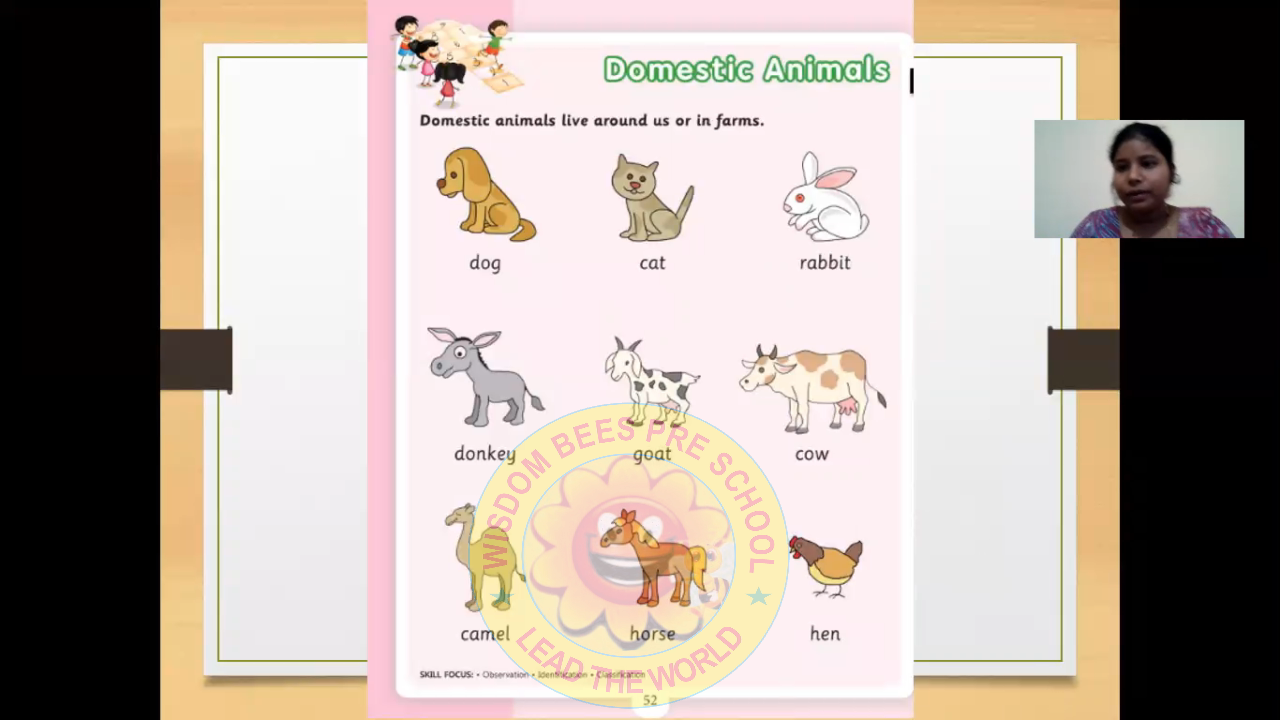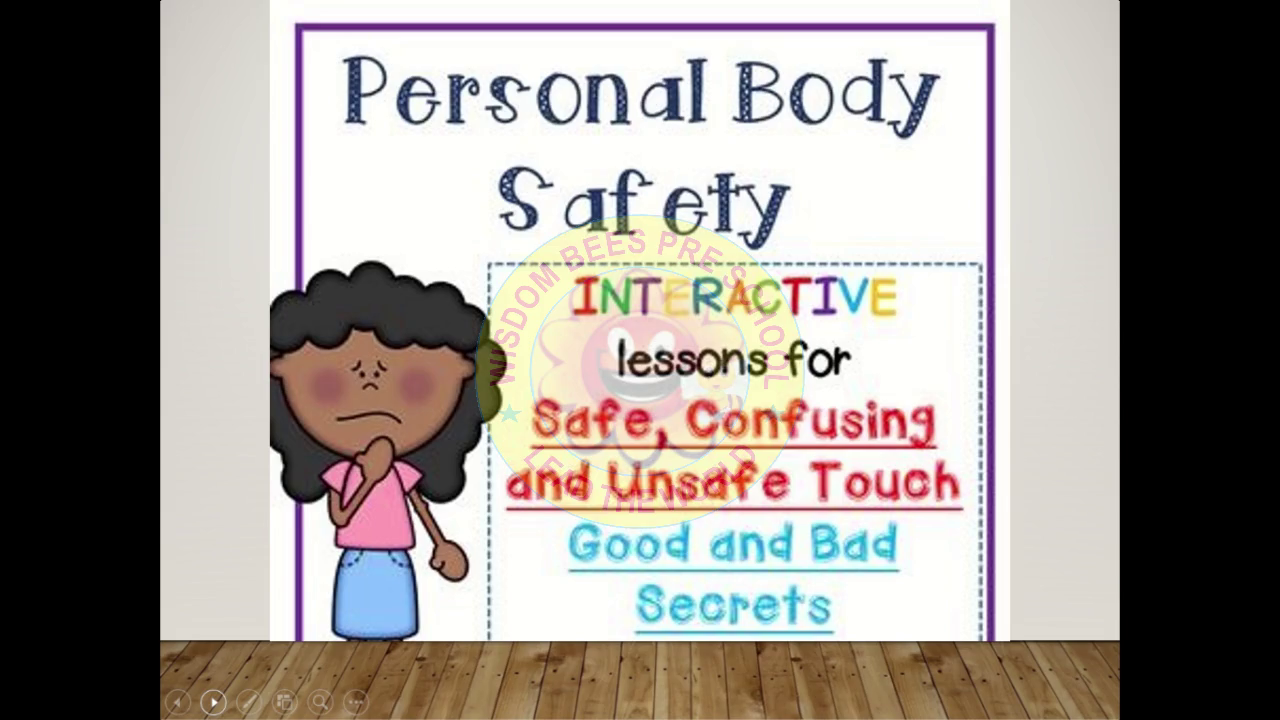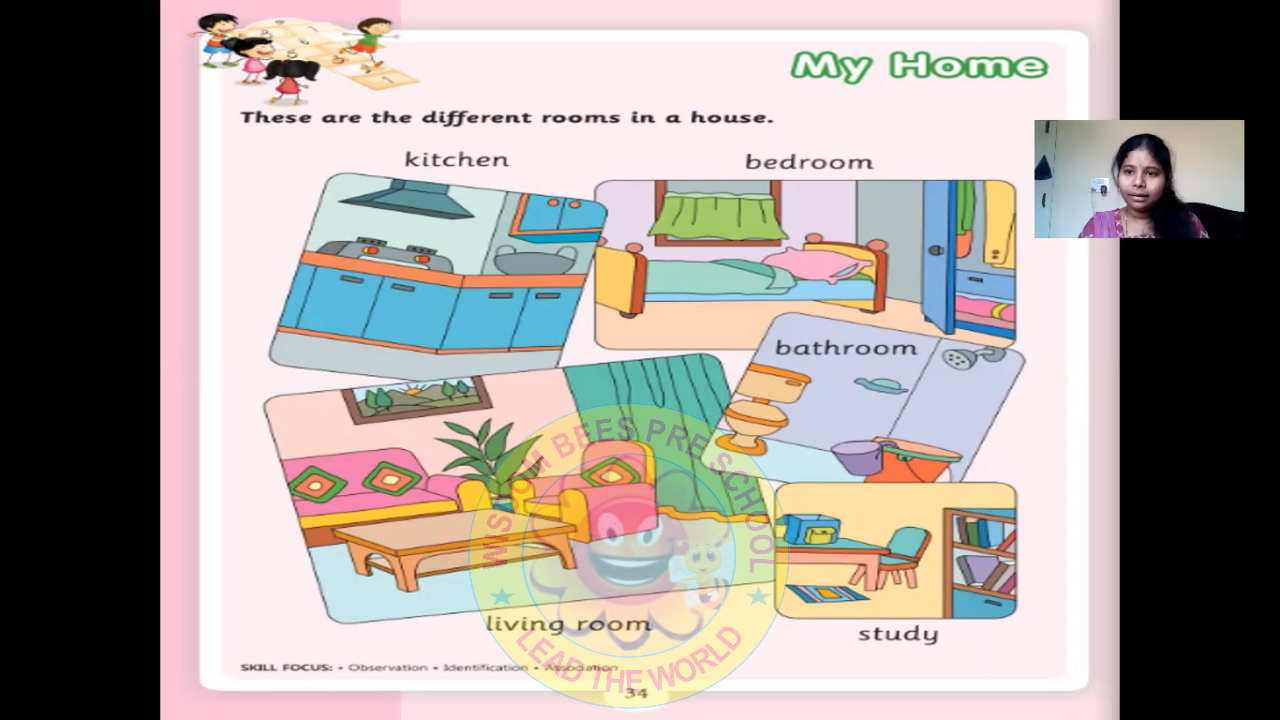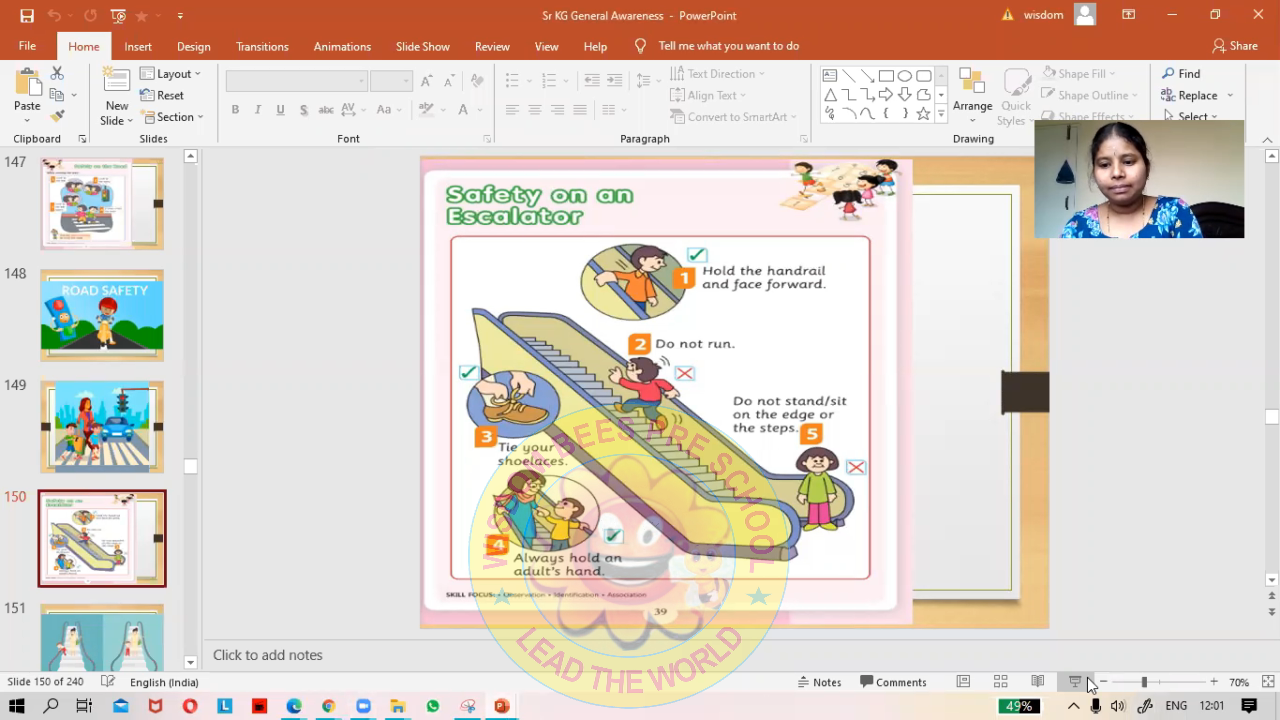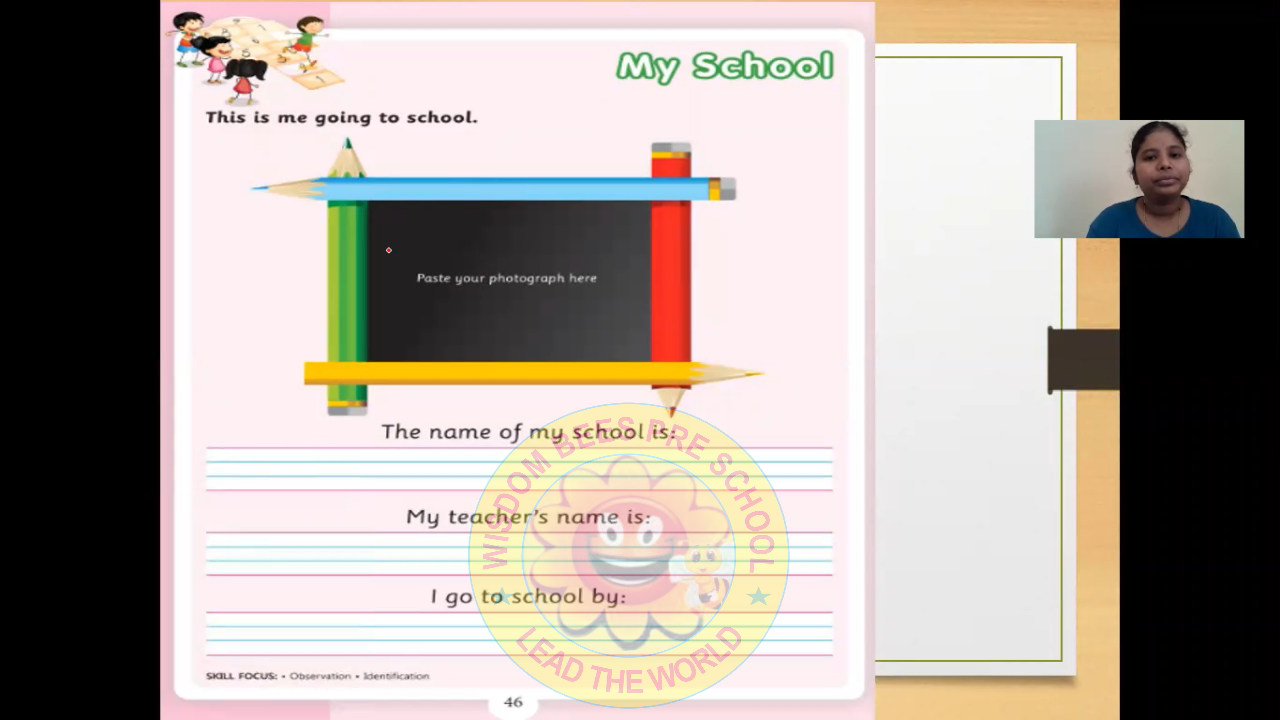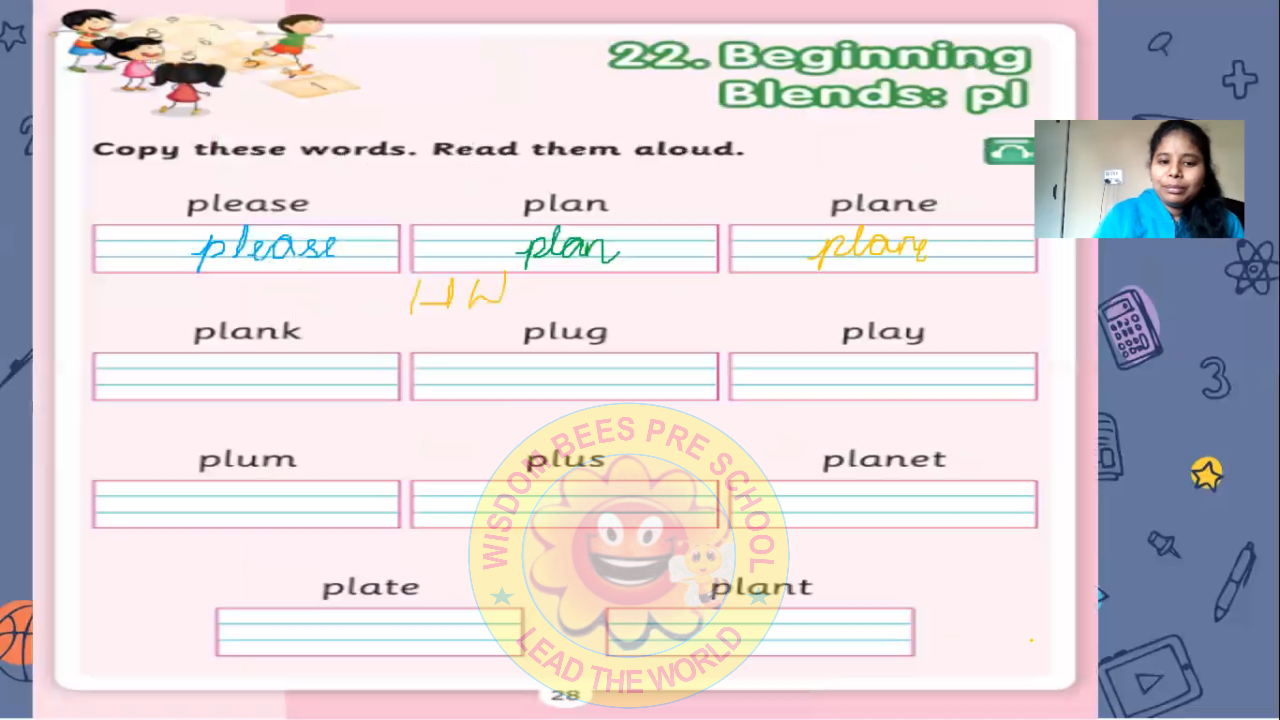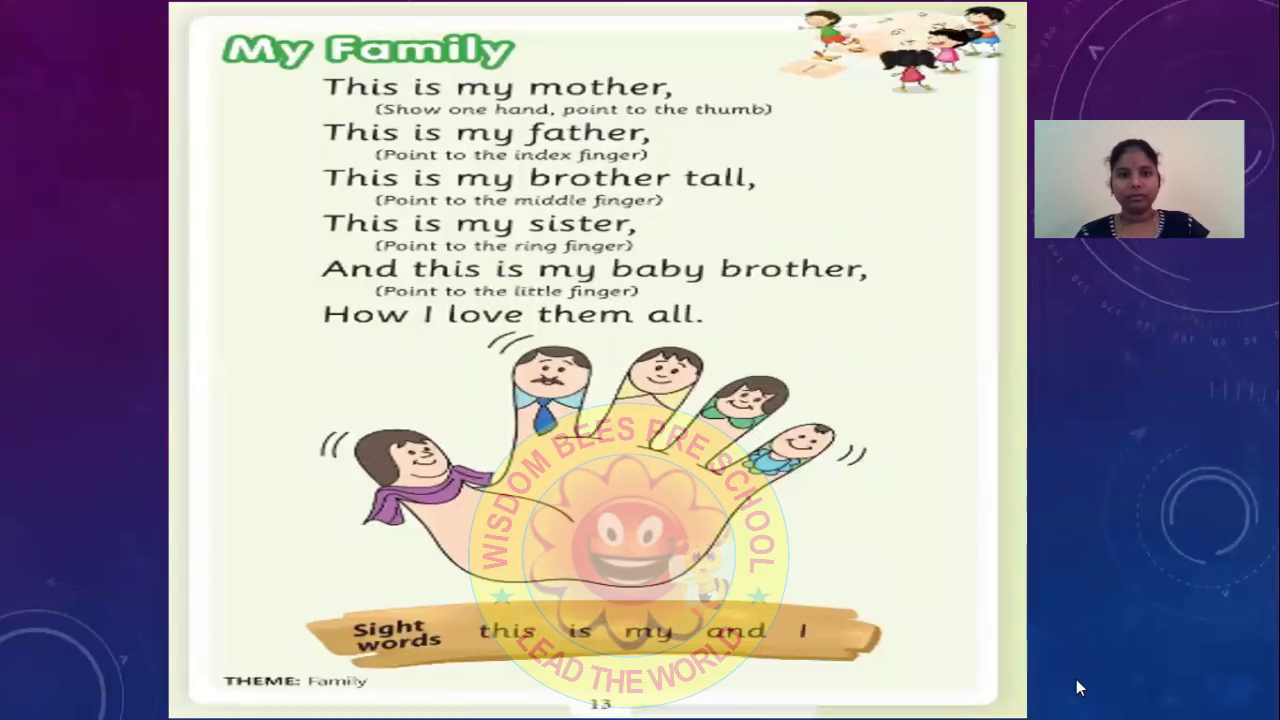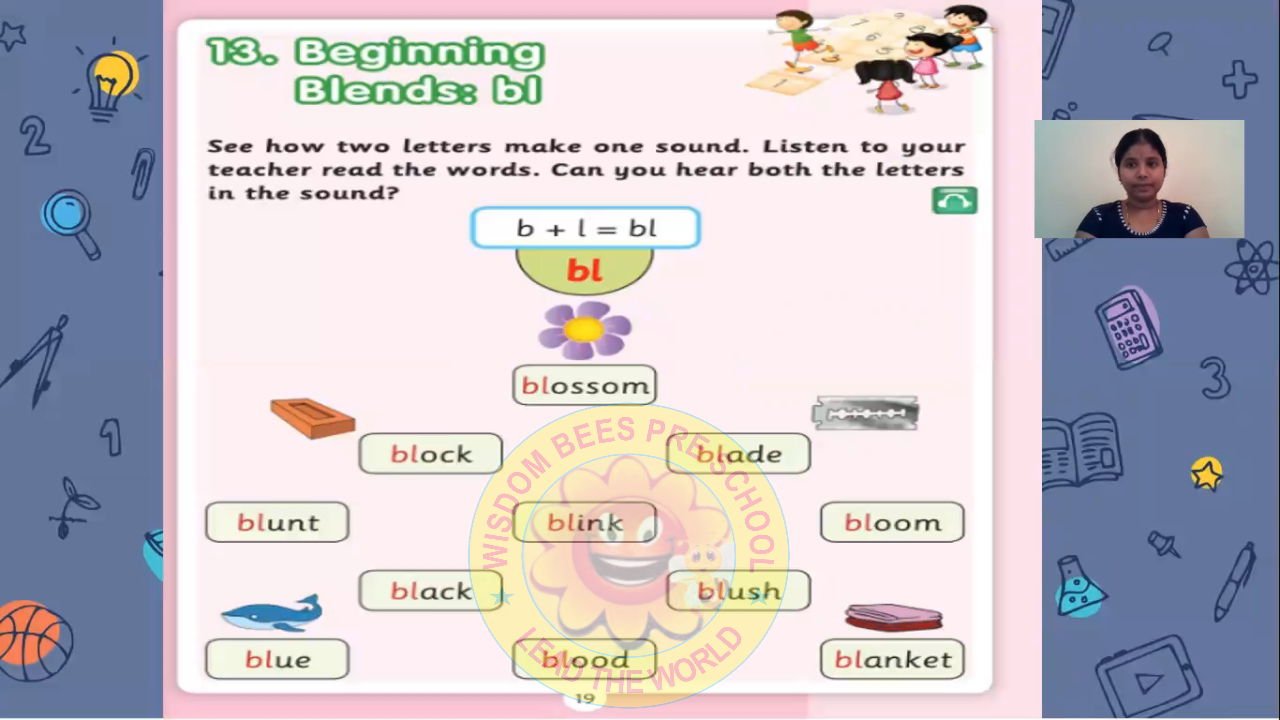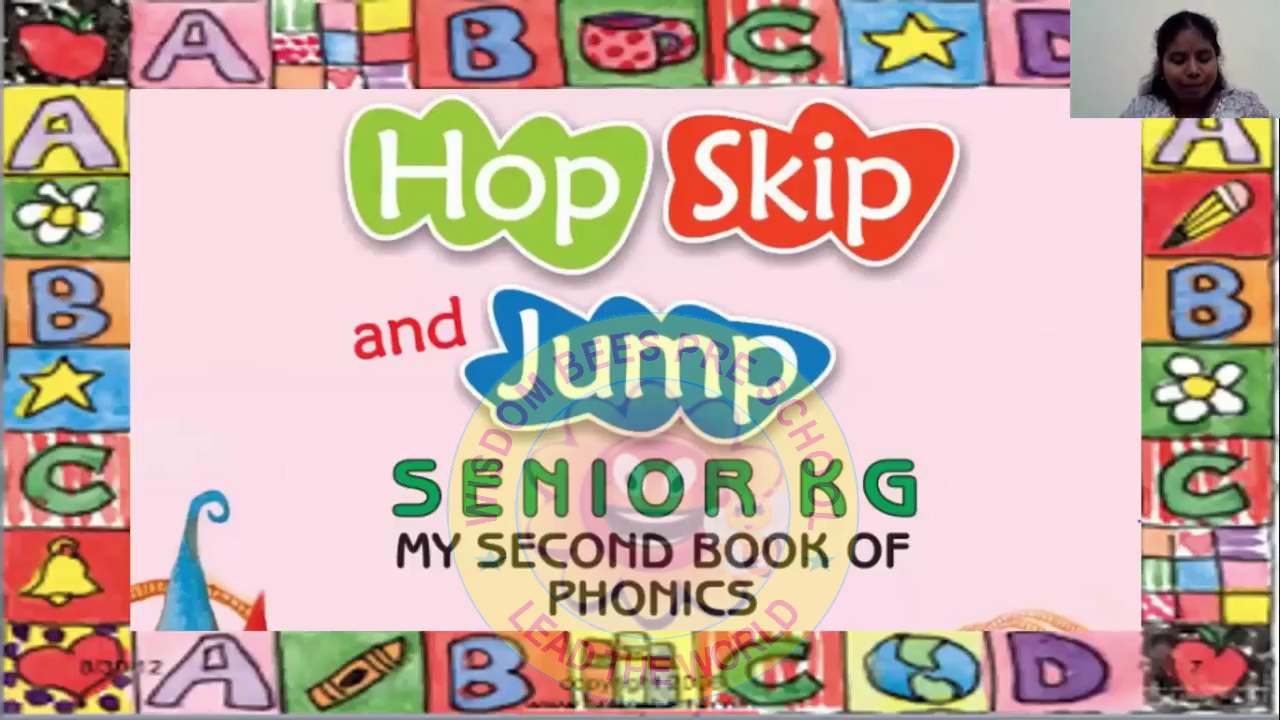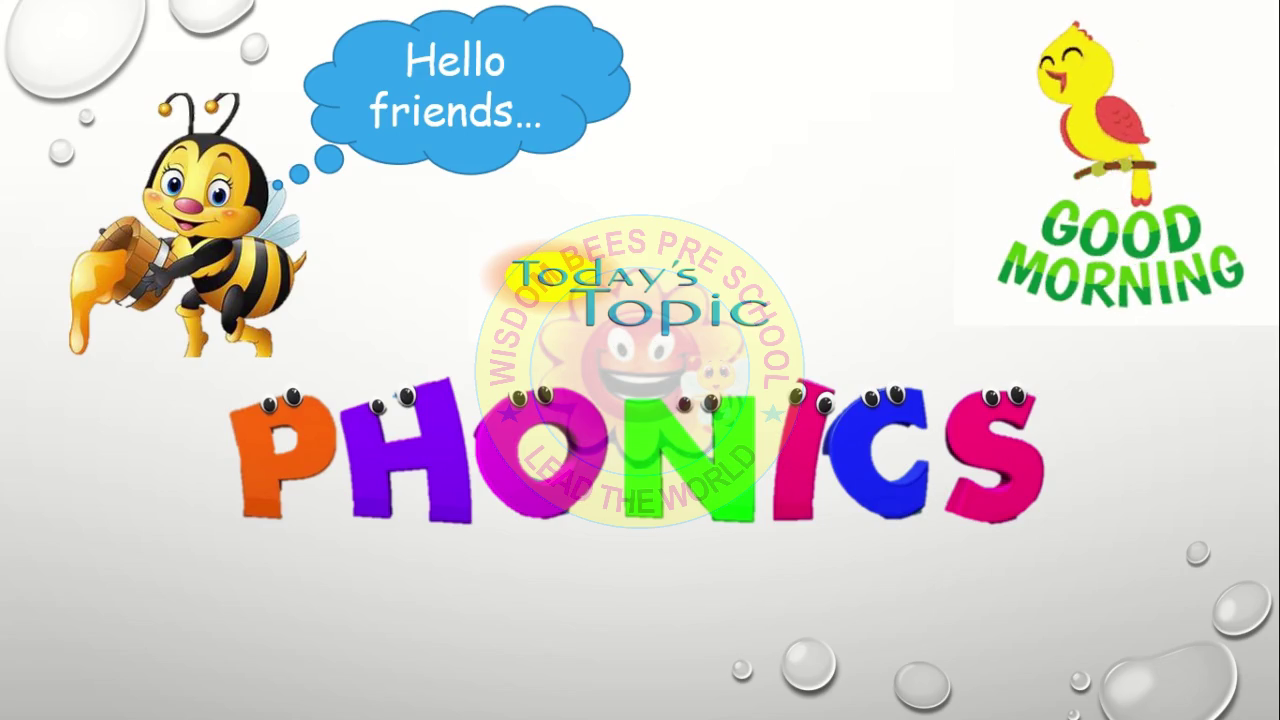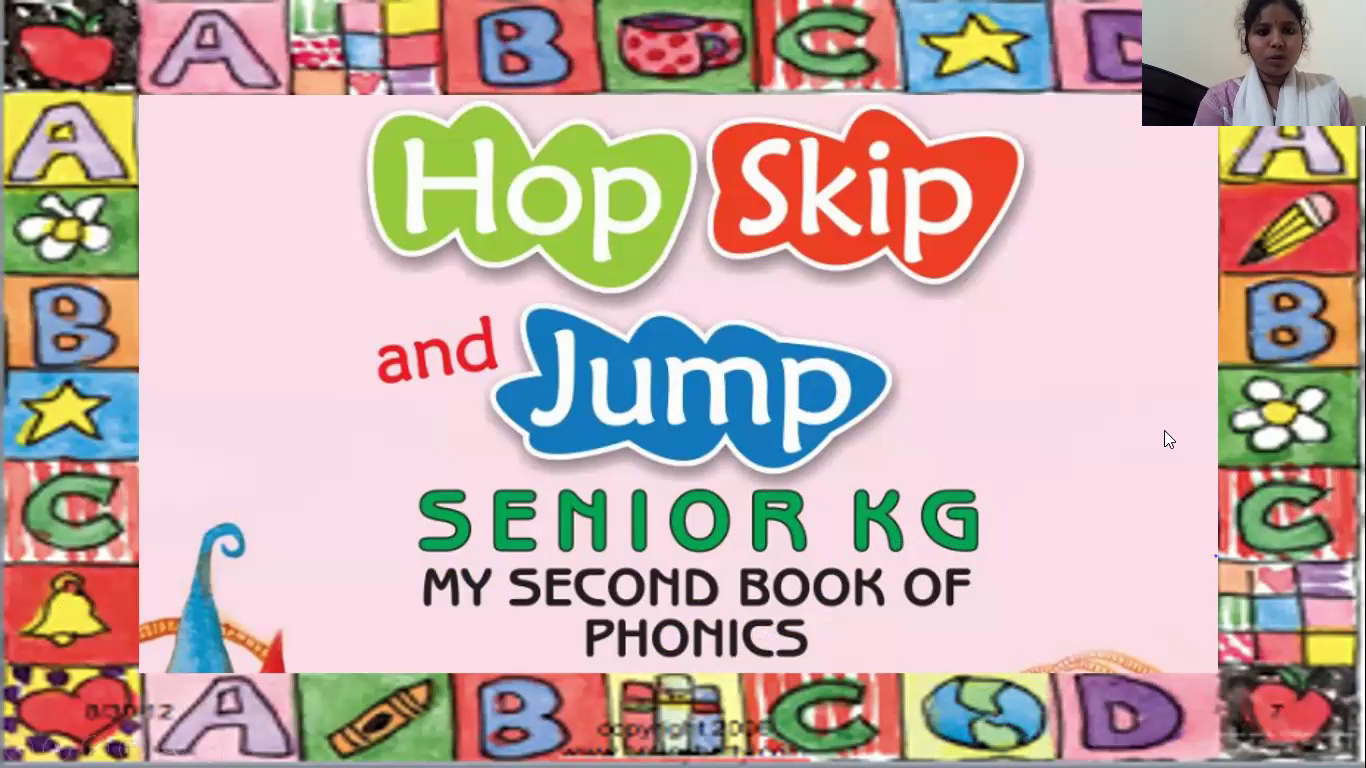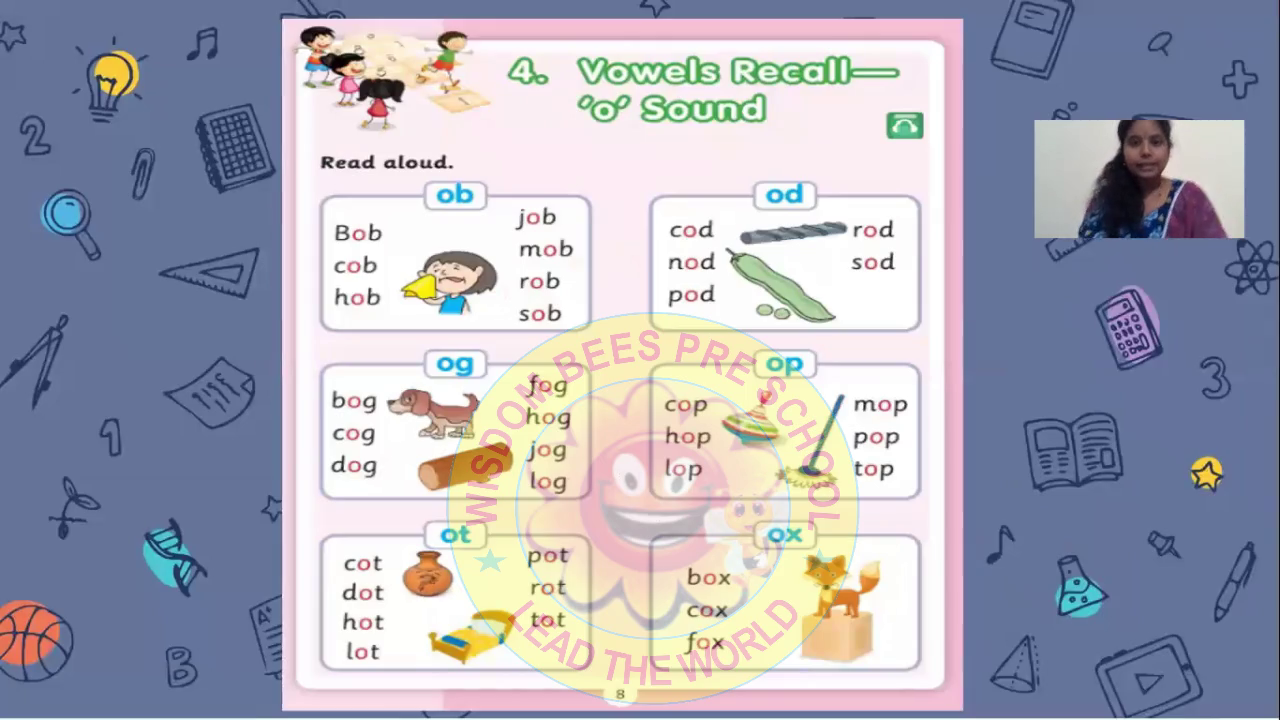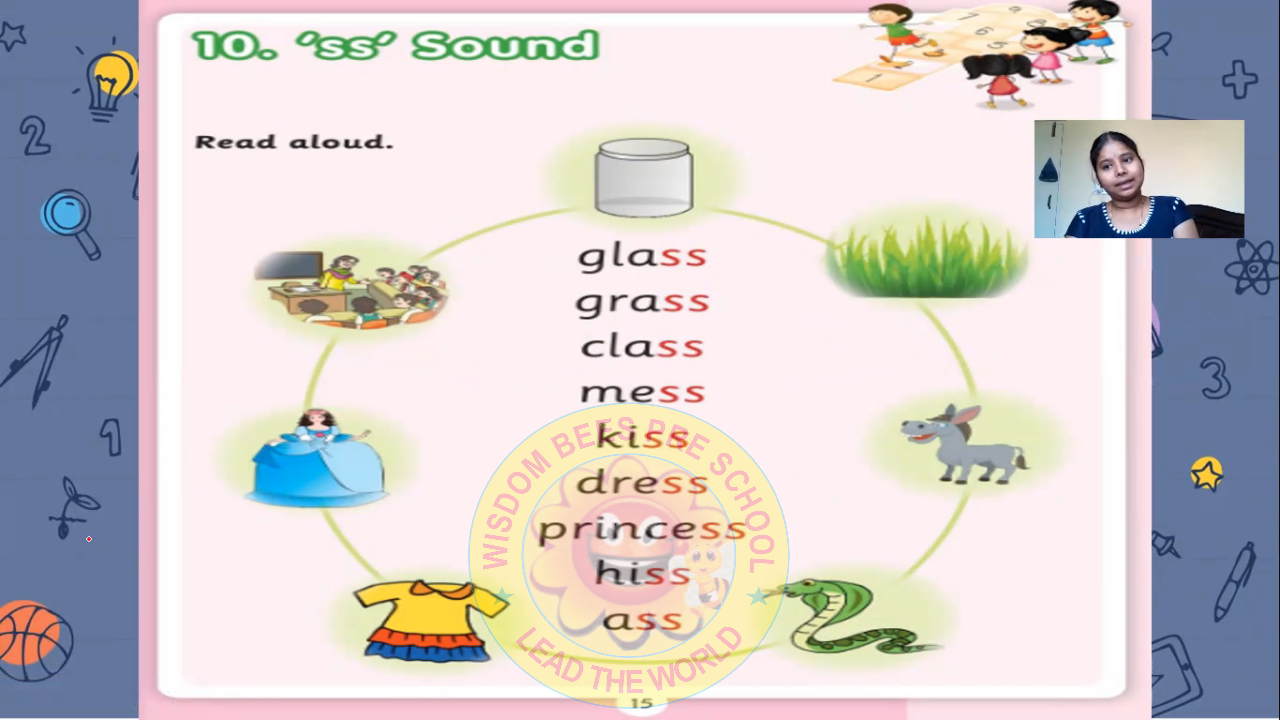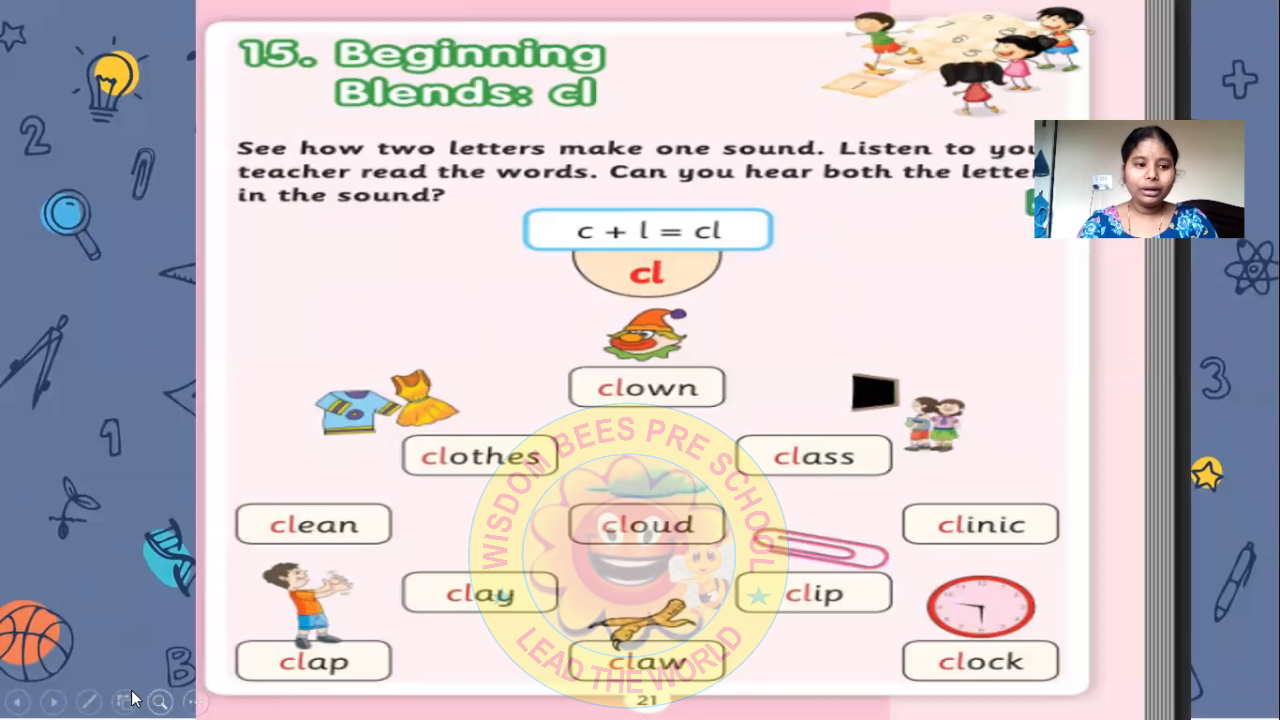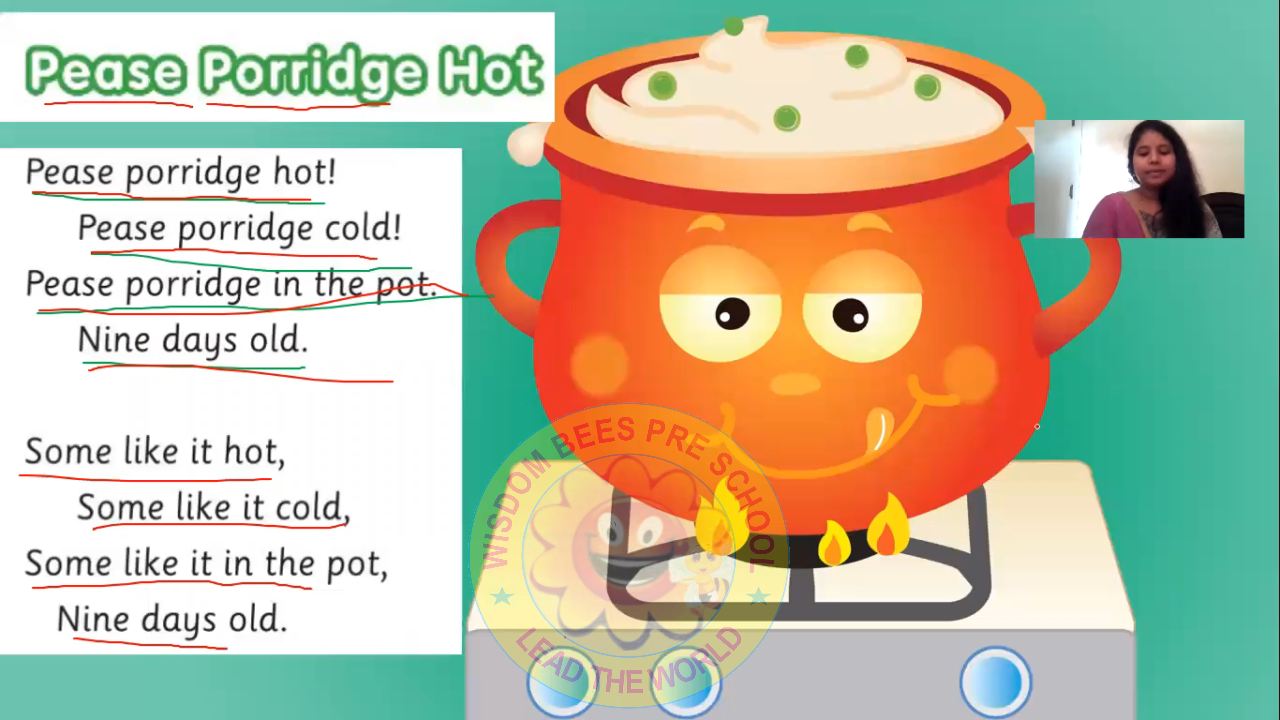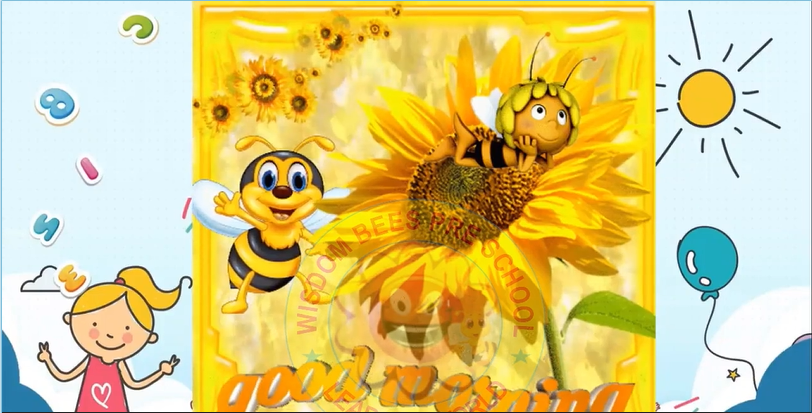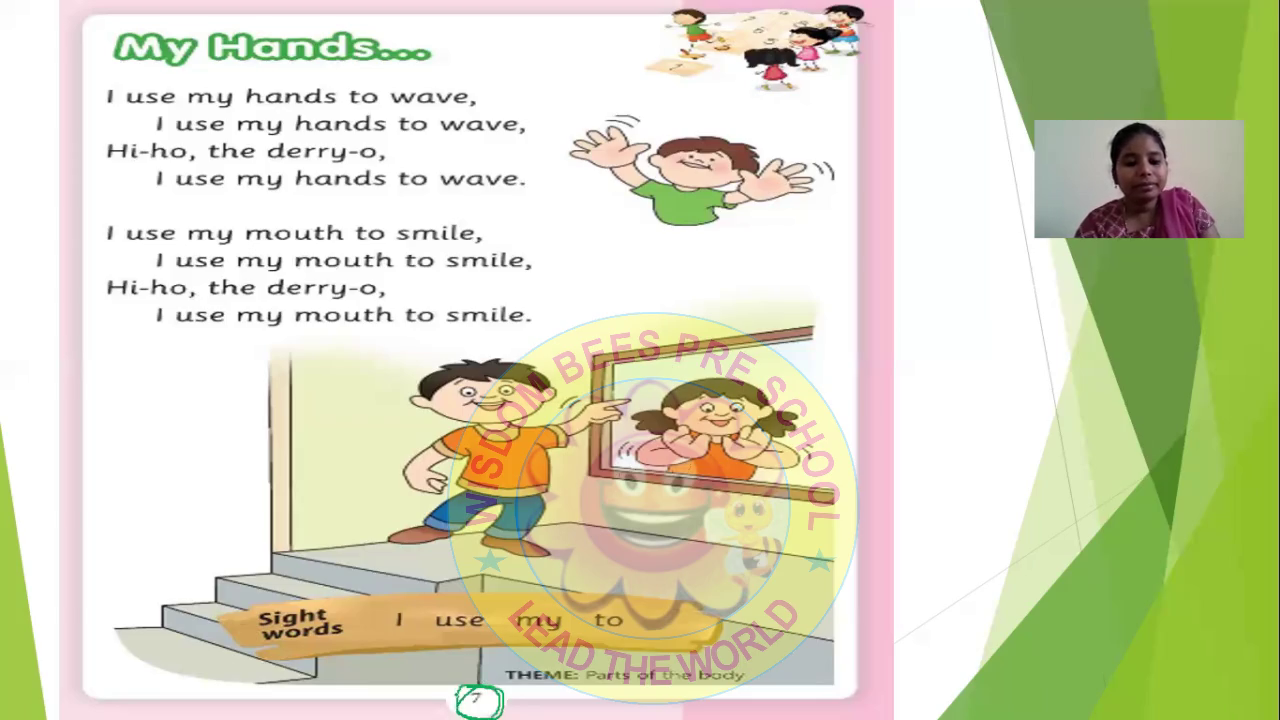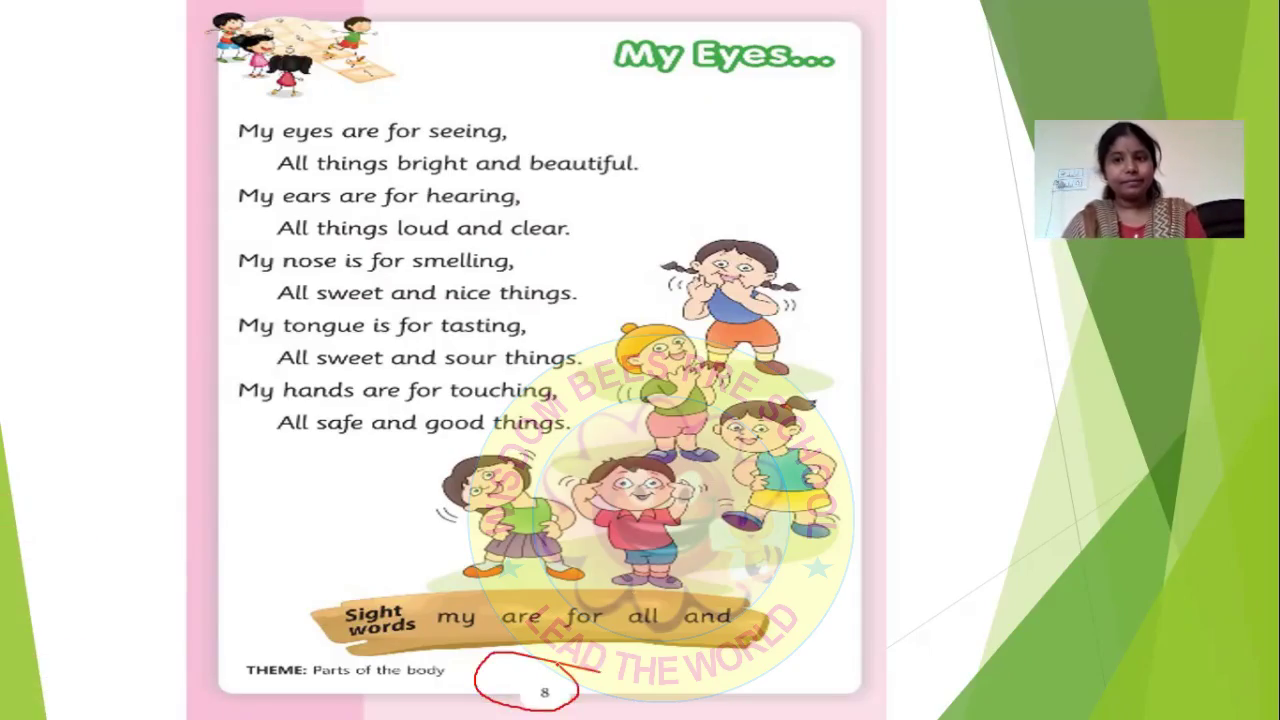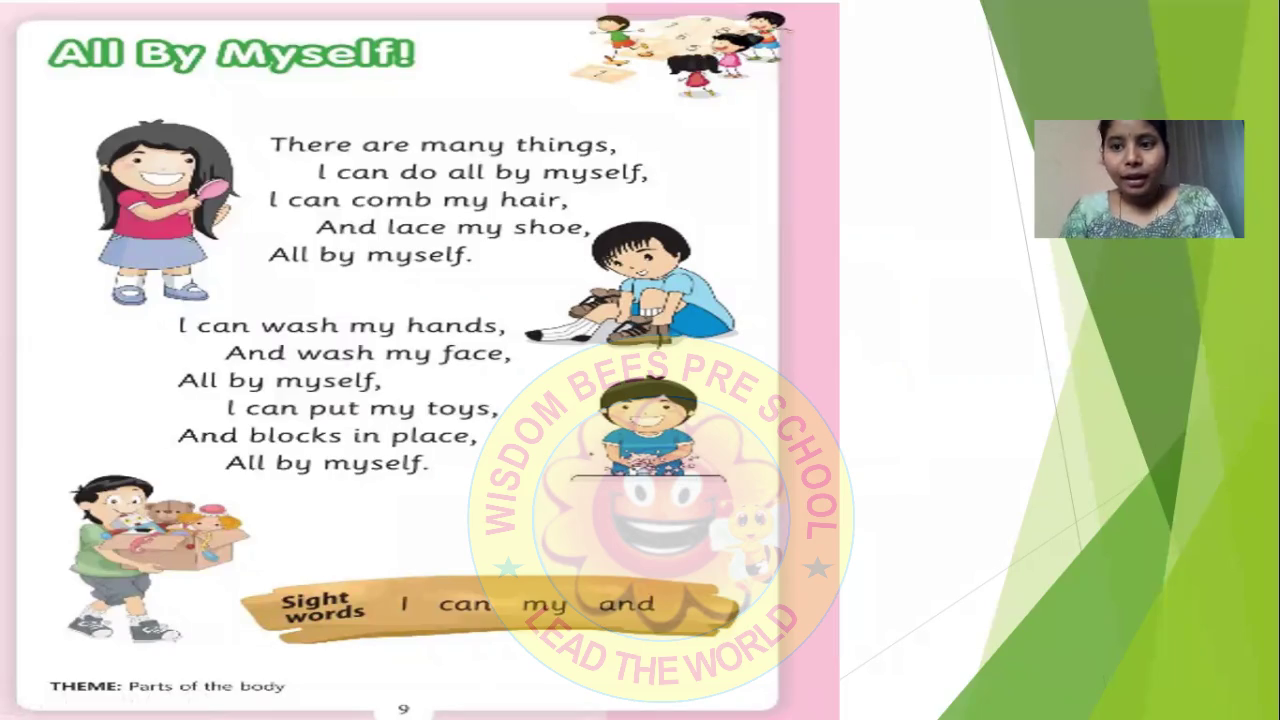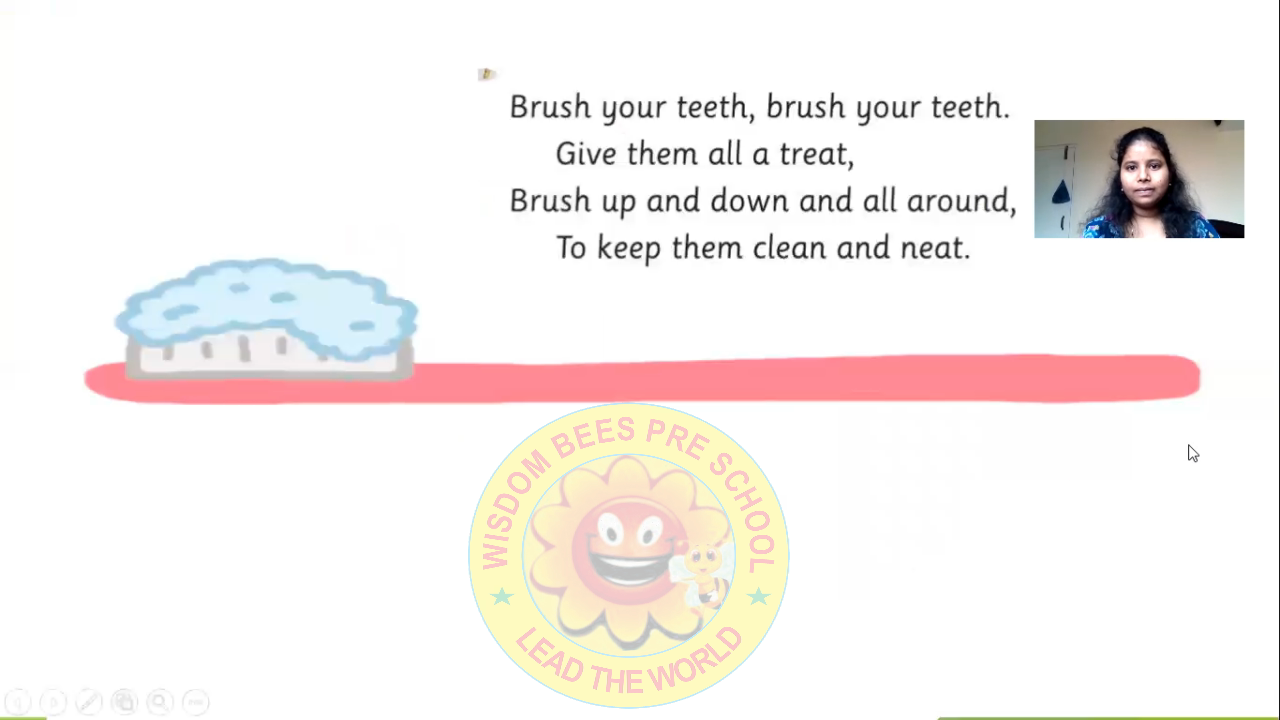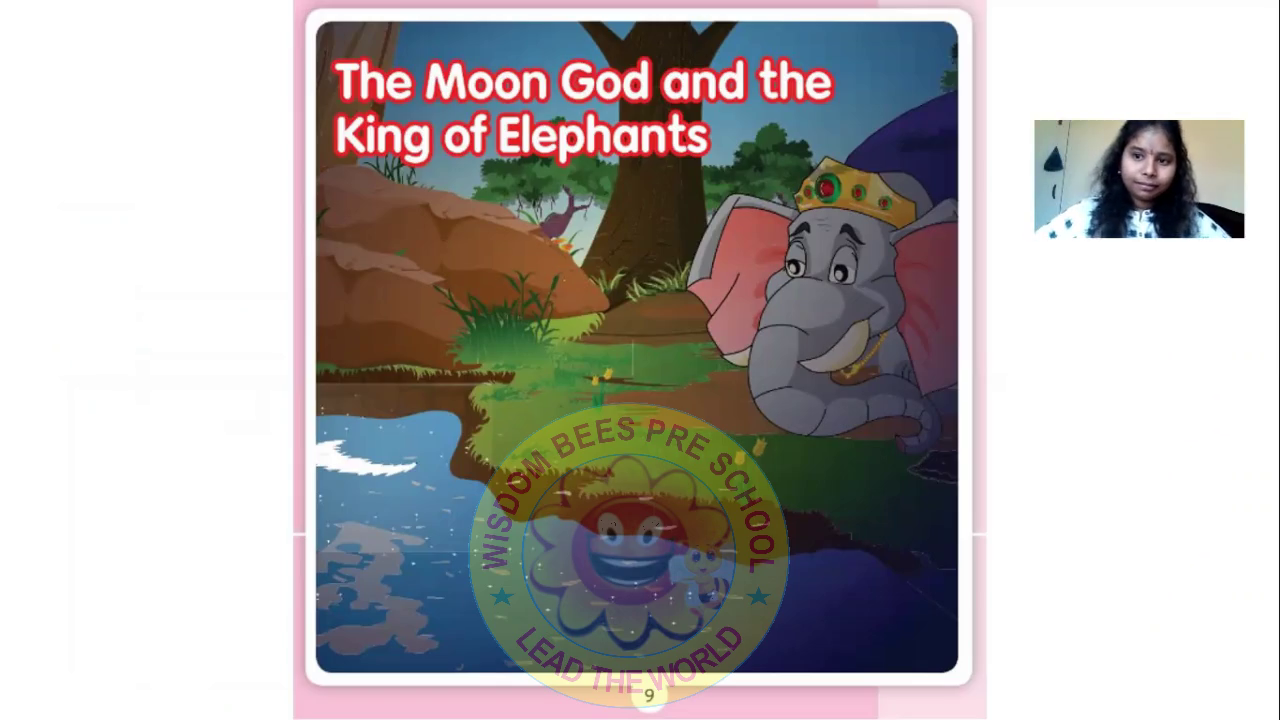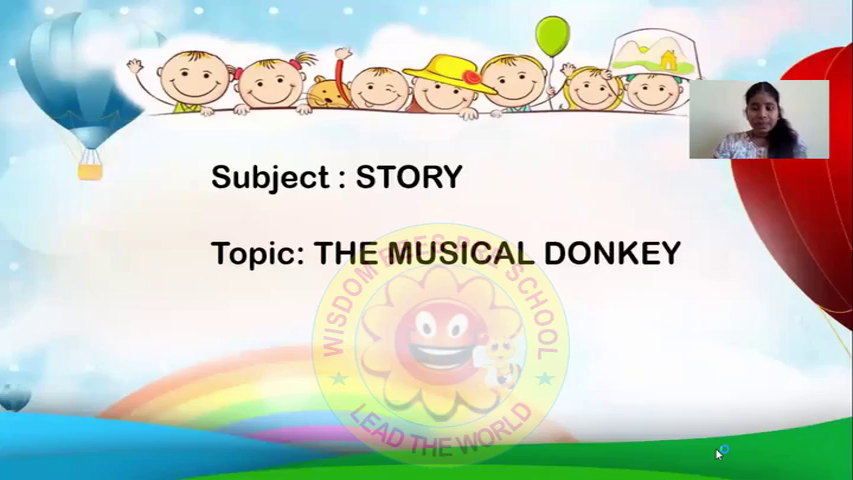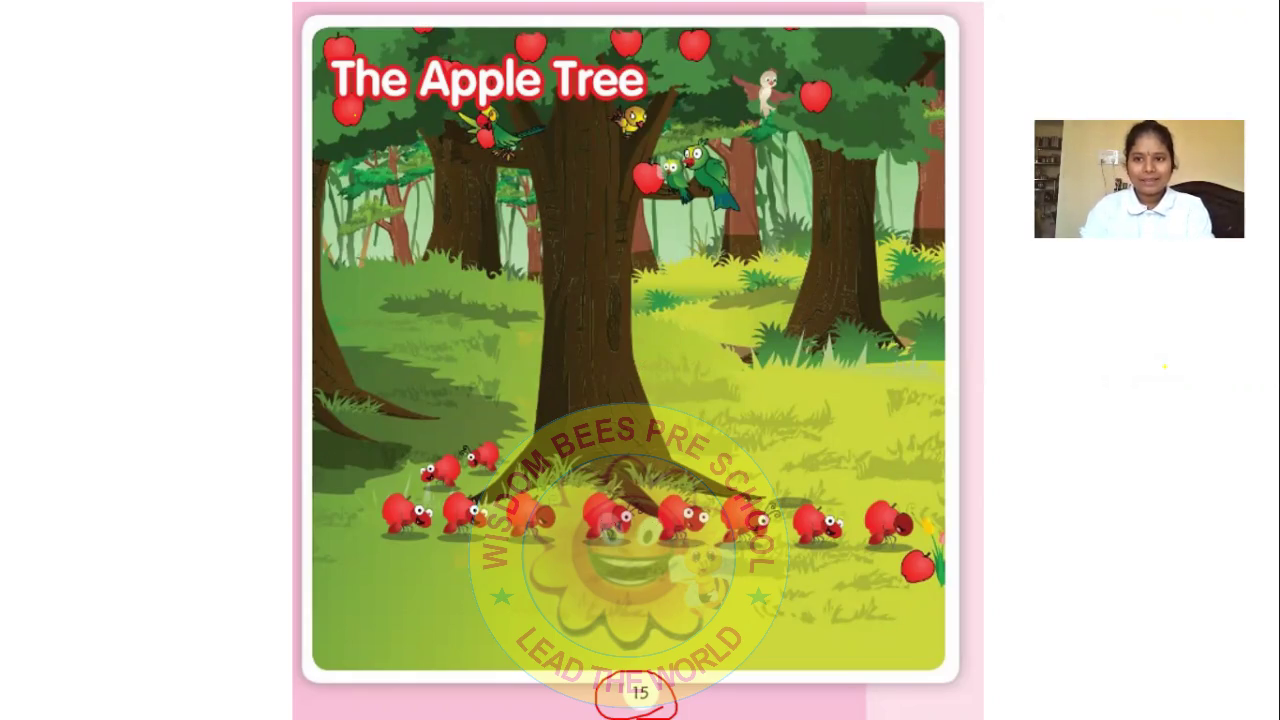Academic Erudition (General Awareness) class ten
Self-awareness doesn’t develop all at once. It happens over time. The process begins when kids start being able to recognize and name their emotions, strengths and challenges and likes and dislikes.
Academic Erudition (General Awareness) class seven
Self-awareness doesn’t develop all at once. It happens over time. The process begins when kids start being able to recognize and name their emotions, strengths and challenges and likes and dislikes.
Bridge course GA class one
Interactive activities are fun for kids and also provide numerous benefits for a child’s physical well-being, learning, and social and behavioral skills. By making playtime educational, kids can learn important lessons while still having a great time. Interactive learning also provides space for kids to bond with those around them and can encourage a lifelong interest in learning by making the experience enjoyable and engaging.
With interactive classes, one can have greater control over one’s learning environment, which in turn helps one get a deeper understanding of the subject being taught.
Interactive classes for kids are examples that technology, such as e-learning, can offer to your kid. Recently, it has garnered attention from many parents, as they provide undivided attention from a teacher to a student, resulting in a significant increase in lesson quality.
So, as we scramble to keep our kids busy for the next few weeks and potentially months of school closures and social distancing, you’re probably also wondering how useful online learning actually is.
Bridge course GA class two (part one)
In current days, we hear a lot about child abuse and molestation from newspapers and media. Every single day, when we read newspapers, watch the news, or use the internet, there is always news of young children (both boys and girls) being sexually abused by an adult around them whom they trust or a stranger. The problem is that they do not even realize that something wrong had happened to them. In India, this is widely spreading and occurs both within and outside a family circle. A study says there is one in nine girls and one in 53 boys are abused sexually before the age of 18 years.
Bridge course GA class two (part two)
About 90% of victims are sexually abused by the person they know and only 10% of children were abused by strangers (Deb & Mukherjee, 2011). There are many negative consequences of child sexual abuse on children’s mental health, which may even continue throughout their life span. Every day, the safety of children throughout the country is threatened by child abuse. Keeping our future generation safe is not only the responsibility of a family, teacher, any agency, or a professional group rather it is a responsibility of the whole community.
Bridge course GA class two (part three)
Every parent wants their children to be safe and secure and they want to give them a safe environment, where a child can grow without any fear. Parents want to protect their children from every odd situation. In day-to-day life, children come in contact with many people who may be good or bad. So, it is the responsibility of parents to train and teach their children to face and handle any odd situation or any bad person coming in their way. Teaching children about good touch or bad touch makes them confident, emotionally strong, and helps them to grow normally. We can protect our children from maltreatment first by awareness. Every person who is involved with child care should have knowledge of child protection. The protection of children is not only an individual issue but a community concern as well.
Academic Erudition (General Awareness) class one (part one)
Self-awareness doesn’t develop all at once. It happens over time. The process begins when kids start being able to recognize and name their emotions, strengths and challenges and likes and dislikes.
Academic Erudition (General Awareness) class one (part two)
Self-awareness doesn’t develop all at once. It happens over time. The process begins when kids start being able to recognize and name their emotions, strengths and challenges and likes and dislikes.
Academic Erudition (General Awareness) class two (part one)
Early education is very important for Toddlers & kids. Learning of human body parts is a basic part of kindergarten education.
Academic Erudition (General Awareness) class two (part two)
Early education is very important for Toddlers & kids. Learning of human body parts is a basic part of kindergarten education.
Academic Erudition (General Awareness) class three(part one)
Self-awareness doesn’t develop all at once. It happens over time. The process begins when kids start being able to recognize and name their emotions, strengths and challenges and likes and dislikes.
Academic Erudition (General Awareness) class three(part two)
Self-awareness doesn’t develop all at once. It happens over time. The process begins when kids start being able to recognize and name their emotions, strengths and challenges and likes and dislikes.
Academic Erudition (General Awareness) class four(part one)
Self-awareness doesn’t develop all at once. It happens over time. The process begins when kids start being able to recognize and name their emotions, strengths and challenges and likes and dislikes.
Academic Erudition (General Awareness) class four(part two)
Self-awareness doesn’t develop all at once. It happens over time. The process begins when kids start being able to recognize and name their emotions, strengths and challenges and likes and dislikes.
Academic Erudition (General Awareness) class five(part one)
Self-awareness doesn’t develop all at once. It happens over time. The process begins when kids start being able to recognize and name their emotions, strengths and challenges and likes and dislikes.
Academic Erudition (General Awareness) class five(part two)
Self-awareness doesn’t develop all at once. It happens over time. The process begins when kids start being able to recognize and name their emotions, strengths and challenges and likes and dislikes.
Academic Erudition (General Awareness) class six
Self-awareness doesn’t develop all at once. It happens over time. The process begins when kids start being able to recognize and name their emotions, strengths and challenges and likes and dislikes.
Academic Erudition (General Awareness) class seven
Self-awareness doesn’t develop all at once. It happens over time. The process begins when kids start being able to recognize and name their emotions, strengths and challenges and likes and dislikes.
Academic Erudition (General Awareness) class eight
Self-awareness doesn’t develop all at once. It happens over time. The process begins when kids start being able to recognize and name their emotions, strengths and challenges and likes and dislikes.
Academic Erudition (General Awareness) class nine
Self-awareness doesn’t develop all at once. It happens over time. The process begins when kids start being able to recognize and name their emotions, strengths and challenges and likes and dislikes.
Academic Erudition (General Awareness) class ten
Self-awareness doesn’t develop all at once. It happens over time. The process begins when kids start being able to recognize and name their emotions, strengths and challenges and likes and dislikes.
Academic Erudition (General Awareness) class eleven
Self-awareness doesn’t develop all at once. It happens over time. The process begins when kids start being able to recognize and name their emotions, strengths and challenges and likes and dislikes.
Academic Erudition (General Awareness) class twelve
Self-awareness doesn’t develop all at once. It happens over time. The process begins when kids start being able to recognize and name their emotions, strengths and challenges and likes and dislikes.
Academic Erudition (General Awareness) class thirteen
Self-awareness doesn’t develop all at once. It happens over time. The process begins when kids start being able to recognize and name their emotions, strengths and challenges and likes and dislikes.
Academic Erudition (General Awareness) class fourteen
Self-awareness doesn’t develop all at once. It happens over time. The process begins when kids start being able to recognize and name their emotions, strengths and challenges and likes and dislikes.
Academic Erudition (General Awareness) class fifteen
Self-awareness doesn’t develop all at once. It happens over time. The process begins when kids start being able to recognize and name their emotions, strengths and challenges and likes and dislikes.
Academic Erudition (General Awareness) class sixteen
Self-awareness doesn’t develop all at once. It happens over time. The process begins when kids start being able to recognize and name their emotions, strengths and challenges and likes and dislikes.
Academic Erudition (General Awareness) class seventeen
Self-awareness doesn’t develop all at once. It happens over time. The process begins when kids start being able to recognize and name their emotions, strengths and challenges and likes and dislikes.
Academic Erudition (General Awareness) class eighteen
Self-awareness doesn’t develop all at once. It happens over time. The process begins when kids start being able to recognize and name their emotions, strengths and challenges and likes and dislikes.
Academic Erudition (General Awareness) class nineteen
Self-awareness doesn’t develop all at once. It happens over time. The process begins when kids start being able to recognize and name their emotions, strengths and challenges and likes and dislikes.
Academic Erudition (General Awareness) class twenty
Self-awareness doesn’t develop all at once. It happens over time. The process begins when kids start being able to recognize and name their emotions, strengths and challenges and likes and dislikes.
Academic Erudition (General Awareness) class twentyone
Self-awareness doesn’t develop all at once. It happens over time. The process begins when kids start being able to recognize and name their emotions, strengths and challenges and likes and dislikes.
Academic Erudition (General Awareness) class twentytwo
Self-awareness doesn’t develop all at once. It happens over time. The process begins when kids start being able to recognize and name their emotions, strengths and challenges and likes and dislikes.
Academic Erudition (General Awareness) class twentythree
Self-awareness doesn’t develop all at once. It happens over time. The process begins when kids start being able to recognize and name their emotions, strengths and challenges and likes and dislikes.
Academic Erudition (Phonics) class nine
Phonics instruction plays a key role in helping students comprehend text. It helps the student map sounds onto spellings, thus enabling them to decode words. Decoding words aids in the development of word recognition, which in turn increases reading fluency. Reading fluency improves reading comprehension because as students are no longer struggling with decoding words, they can concentrate on making meaning from the text.
Academic Erudition (Phonics) class ten
Phonics instruction plays a key role in helping students comprehend text. It helps the student map sounds onto spellings, thus enabling them to decode words. Decoding words aids in the development of word recognition, which in turn increases reading fluency. Reading fluency improves reading comprehension because as students are no longer struggling with decoding words, they can concentrate on making meaning from the text.
Academic Erudition (Phonics) class seven
Phonics is a method for teaching people how to read and write an alphabetic language. It is done by demonstrating the relationship between the sounds of the spoken language (phonemes), and the letters or groups of letters (graphemes) or syllables of the written language.
Academic Erudition (Phonics) class seven
Phonics instruction plays a key role in helping students comprehend text. It helps the student map sounds onto spellings, thus enabling them to decode words. Decoding words aids in the development of word recognition, which in turn increases reading fluency. Reading fluency improves reading comprehension because as students are no longer struggling with decoding words, they can concentrate on making meaning from the text.
Academic Erudition (Phonics) class one
Phonics is an important tool to develop reading fluency.
Phonics teaches pupils that letters they see written on a page are part of a code that represents the sounds of spoken language, and provides them with the tools to understand that code. With these skills, they develop into fluent readers who are able to quickly recognize familiar words and to easily sound out new words they encounter.
Bridge course Phonics Class one, part one
Phonics is a method for teaching the reading and writing of an alphabetic language (such as English, Arabic and Russian).
Bridge course Phonics Class one, part two
It is done by demonstrating the relationship between the sounds of the spoken language (phonemes), and the letters or groups of letters (graphemes) or syllables of the written language. This is also known as the Alphabetic principle or the Alphabetic code.
Bridge course Phonics Class two
Phonics is an important tool to develop reading fluency.
Phonics teaches pupils that letters they see written on a page are part of a code that represents the sounds of spoken language, and provides them with the tools to understand that code. With these skills, they develop into fluent readers who are able to quickly recognize familiar words and to easily sound out new words they encounter.
Bridge course Phonics Class three (part one)
Phonics provides a foundation of learning meant to help make reading easier. Phonics builds a foundation used to help children learn to read by breaking down words into sounds and building letter and word recognition. This can enhance a child’s ability to use unknown words in the future. Phonics enables children to blend words and teach them how to dissect words while improving spelling ability and increasing pronunciation.
Bridge course Phonics Class three (part two)
Phonics provides a foundation of learning meant to help make reading easier. Phonics builds a foundation used to help children learn to read by breaking down words into sounds and building letter and word recognition. This can enhance a child’s ability to use unknown words in the future. Phonics enables children to blend words and teach them how to dissect words, while improving spelling ability and increasing pronunciation.
Academic Erudition (Phonics) class one
Phonics is an important tool to develop reading fluency.
Phonics teaches pupils that letters they see written on a page are part of a code that represents the sounds of spoken language, and provides them with the tools to understand that code. With these skills, they develop into fluent readers who are able to quickly recognize familiar words and to easily sound out new words they encounter.
Academic Erudition (Phonics) class two
Phonics is a method for teaching people how to read and write an alphabetic language. It is done by demonstrating the relationship between the sounds of the spoken language (phonemes), and the letters or groups of letters (graphemes) or syllables of the written language.
Academic Erudition (Phonics) class three
Phonics instruction plays a key role in helping students comprehend text. It helps the student map sounds onto spellings, thus enabling them to decode words. Decoding words aids in the development of word recognition, which in turn increases reading fluency. Reading fluency improves reading comprehension because as students are no longer struggling with decoding words, they can concentrate on making meaning from the text.
Academic Erudition (Phonics) class four
Phonics is a method for teaching people how to read and write an alphabetic language. It is done by demonstrating the relationship between the sounds of the spoken language (phonemes), and the letters or groups of letters (graphemes) or syllables of the written language.
Academic Erudition (Phonics) class five
Phonics instruction plays a key role in helping students comprehend text. It helps the student map sounds onto spellings, thus enabling them to decode words. Decoding words aids in the development of word recognition, which in turn increases reading fluency. Reading fluency improves reading comprehension because as students are no longer struggling with decoding words, they can concentrate on making meaning from the text.
Academic Erudition (Phonics) class six
Phonics instruction plays a key role in helping students comprehend text. It helps the student map sounds onto spellings, thus enabling them to decode words. Decoding words aids in the development of word recognition, which in turn increases reading fluency. Reading fluency improves reading comprehension because as students are no longer struggling with decoding words, they can concentrate on making meaning from the text.
Academic Erudition (Phonics) class seven
Phonics instruction plays a key role in helping students comprehend text. It helps the student map sounds onto spellings, thus enabling them to decode words. Decoding words aids in the development of word recognition, which in turn increases reading fluency. Reading fluency improves reading comprehension because as students are no longer struggling with decoding words, they can concentrate on making meaning from the text.
Academic Erudition (Phonics) class eight
Phonics instruction plays a key role in helping students comprehend text. It helps the student map sounds onto spellings, thus enabling them to decode words. Decoding words aids in the development of word recognition, which in turn increases reading fluency. Reading fluency improves reading comprehension because as students are no longer struggling with decoding words, they can concentrate on making meaning from the text.
Academic Erudition (Phonics) class nine
Phonics instruction plays a key role in helping students comprehend text. It helps the student map sounds onto spellings, thus enabling them to decode words. Decoding words aids in the development of word recognition, which in turn increases reading fluency. Reading fluency improves reading comprehension because as students are no longer struggling with decoding words, they can concentrate on making meaning from the text.
Academic Erudition (Phonics) class ten
Phonics instruction plays a key role in helping students comprehend text. It helps the student map sounds onto spellings, thus enabling them to decode words. Decoding words aids in the development of word recognition, which in turn increases reading fluency. Reading fluency improves reading comprehension because as students are no longer struggling with decoding words, they can concentrate on making meaning from the text.
Academic Erudition (Phonics) class eleven
Phonics instruction plays a key role in helping students comprehend text. It helps the student map sounds onto spellings, thus enabling them to decode words. Decoding words aids in the development of word recognition, which in turn increases reading fluency. Reading fluency improves reading comprehension because as students are no longer struggling with decoding words, they can concentrate on making meaning from the text.
Academic Erudition (Phonics) class twelve
Phonics instruction plays a key role in helping students comprehend text. It helps the student map sounds onto spellings, thus enabling them to decode words. Decoding words aids in the development of word recognition, which in turn increases reading fluency. Reading fluency improves reading comprehension because as students are no longer struggling with decoding words, they can concentrate on making meaning from the text.
Academic Erudition (Phonics) class thirteen
Phonics instruction plays a key role in helping students comprehend text. It helps the student map sounds onto spellings, thus enabling them to decode words. Decoding words aids in the development of word recognition, which in turn increases reading fluency. Reading fluency improves reading comprehension because as students are no longer struggling with decoding words, they can concentrate on making meaning from the text.
Academic Erudition (Phonics) class fourteen
Phonics instruction plays a key role in helping students comprehend text. It helps the student map sounds onto spellings, thus enabling them to decode words. Decoding words aids in the development of word recognition, which in turn increases reading fluency. Reading fluency improves reading comprehension because as students are no longer struggling with decoding words, they can concentrate on making meaning from the text.
Academic Erudition (Phonics) class fifteen
Phonics instruction plays a key role in helping students comprehend text. It helps the student map sounds onto spellings, thus enabling them to decode words. Decoding words aids in the development of word recognition, which in turn increases reading fluency. Reading fluency improves reading comprehension because as students are no longer struggling with decoding words, they can concentrate on making meaning from the text.
Academic Erudition (Phonics) class sixteen
Phonics instruction plays a key role in helping students comprehend text. It helps the student map sounds onto spellings, thus enabling them to decode words. Decoding words aids in the development of word recognition, which in turn increases reading fluency. Reading fluency improves reading comprehension because as students are no longer struggling with decoding words, they can concentrate on making meaning from the text.
Academic Erudition (Phonics) class seventeen
Phonics instruction plays a key role in helping students comprehend text. It helps the student map sounds onto spellings, thus enabling them to decode words. Decoding words aids in the development of word recognition, which in turn increases reading fluency. Reading fluency improves reading comprehension because as students are no longer struggling with decoding words, they can concentrate on making meaning from the text.
Academic Erudition (Phonics) class eighteen
Phonics instruction plays a key role in helping students comprehend text. It helps the student map sounds onto spellings, thus enabling them to decode words. Decoding words aids in the development of word recognition, which in turn increases reading fluency. Reading fluency improves reading comprehension because as students are no longer struggling with decoding words, they can concentrate on making meaning from the text.
Academic Erudition (Phonics) class nineteen
Phonics instruction plays a key role in helping students comprehend text. It helps the student map sounds onto spellings, thus enabling them to decode words. Decoding words aids in the development of word recognition, which in turn increases reading fluency. Reading fluency improves reading comprehension because as students are no longer struggling with decoding words, they can concentrate on making meaning from the text.
Academic Erudition (Phonics) class twenty
Phonics instruction plays a key role in helping students comprehend text. It helps the student map sounds onto spellings, thus enabling them to decode words. Decoding words aids in the development of word recognition, which in turn increases reading fluency. Reading fluency improves reading comprehension because as students are no longer struggling with decoding words, they can concentrate on making meaning from the text.
Academic Erudition (Phonics) class twentyone
Phonics instruction plays a key role in helping students comprehend text. It helps the student map sounds onto spellings, thus enabling them to decode words. Decoding words aids in the development of word recognition, which in turn increases reading fluency. Reading fluency improves reading comprehension because as students are no longer struggling with decoding words, they can concentrate on making meaning from the text.
Academic Erudition (Phonics) class twentytwo
Phonics instruction plays a key role in helping students comprehend text. It helps the student map sounds onto spellings, thus enabling them to decode words. Decoding words aids in the development of word recognition, which in turn increases reading fluency. Reading fluency improves reading comprehension because as students are no longer struggling with decoding words, they can concentrate on making meaning from the text.
Academic Erudition (Phonics) class twentythree
Phonics instruction plays a key role in helping students comprehend text. It helps the student map sounds onto spellings, thus enabling them to decode words. Decoding words aids in the development of word recognition, which in turn increases reading fluency. Reading fluency improves reading comprehension because as students are no longer struggling with decoding words, they can concentrate on making meaning from the text.
Academic Erudition (Rhymes) class seven
Rhyme partly seems to be enjoyed simply as a repeating pattern that is pleasant to hear. It also serves as a powerful mnemonic device, facilitating memorization. The regular use of tail rhyme helps to mark off the ends of lines, thus clarifying the metrical structure for the listener.
Bridge course Rhymes class one
Ten Little Fingers (and Ten Little Toes) is a nursery rhyme and lullaby. This song can be used to teach kids the different body parts. It can also be used as a lullaby at night. Sing it gently, and the children will get sleepy in no time 🙂
Academic Erudition (Rhymes) class one (part one)
Academic Erudition (Rhymes) class one (part two)
Academic Erudition (Rhymes) class two
Your body is more than what you see when you look in the mirror – there are different parts that have different jobs, but each part works together so you can eat, sleep, sit in class and play with friends.
Your body is a pretty amazing thing! While there are lots happening on the outside that you can see, such as scratching an itch, eating lunch with your friends at school, and running outdoors, there’s even more happening inside.
This rhyme helps a child to know the functions of parts of the body
Academic Erudition (Rhymes) class three
Rhyme partly seems to be enjoyed simply as a repeating pattern that is pleasant to hear. It also serves as a powerful mnemonic device, facilitating memorization. The regular use of tail rhyme helps to mark off the ends of lines, thus clarifying the metrical structure for the listener.
Academic Erudition (Rhymes) class four
Rhyme partly seems to be enjoyed simply as a repeating pattern that is pleasant to hear. It also serves as a powerful mnemonic device, facilitating memorization. The regular use of tail rhyme helps to mark off the ends of lines, thus clarifying the metrical structure for the listener.
Academic Erudition (Rhymes) class five
Rhyme partly seems to be enjoyed simply as a repeating pattern that is pleasant to hear. It also serves as a powerful mnemonic device, facilitating memorization. The regular use of tail rhyme helps to mark off the ends of lines, thus clarifying the metrical structure for the listener.
Academic Erudition (Rhymes) class six
Rhyme partly seems to be enjoyed simply as a repeating pattern that is pleasant to hear. It also serves as a powerful mnemonic device, facilitating memorization. The regular use of tail rhyme helps to mark off the ends of lines, thus clarifying the metrical structure for the listener.
Academic Erudition (Story) class two
Here is an interesting story from the Macmillan collection with the moral “Think before you act”.
Bridge course Story class one, part one
Teaching the concept of respect helps students succeed. In other words, when children are able to treat each other respectfully, they respond to direction and instruction in a positive way. In effect, they are more likely to succeed in academics. Distractions and behavioral disruptions are lessened. Communication lines open and are more relaxed. This makes for a more conducive learning environment.
Bridge course Story class one, part two
Teaching the concept of respect helps students succeed. In other words, when children are able to treat each other respectfully, they respond to direction and instruction in a positive way. In effect, they are more likely to succeed in academics. Distractions and behavioral disruptions are lessened. Communication lines open and are more relaxed. This makes for a more conducive learning environment.
Bridge course Story class two
We often make the mistake of thinking that since children are smaller than we are and have less information and experience than we do, that they don’t have all the same feelings we do. But they do. The same kind of treatment that would embarrass, humiliate or hurt us, embarrasses, humiliates and hurts children. When human beings are being hurt emotionally, our thinking shuts down. When our thinking is shut down we cannot learn, we can only record. When adults try to “teach” children by criticizing, lecturing, shaming, ridiculing, giving orders, screaming, threatening and hitting, it shuts down their thinking so they can’t learn what the adult intended to teach them to do or not to do; they can only record what is being modeled.
Bridge course Story class three (part one)
A zoo, also known as a zoological park or zoological garden, is a place where animals are confined within enclosures for the public to view.
A zoo is a place where all types of animals are confined and displayed for the public to see.
Bridge course Story class three (part two)
A zoo, also known as a zoological park or zoological garden, is a place where animals are confined within enclosures for the public to view.
A zoo is a place where all types of animals are confined and displayed for the public to see.
Academic Erudition (Story) class one
The moral of this story – “Where there is a will there is a way”. In this very short story for small kids, once when a clever crow is flying, it feels thirsty. It sees a pot of water, but the water is too low inside the pot for the crow to reach
